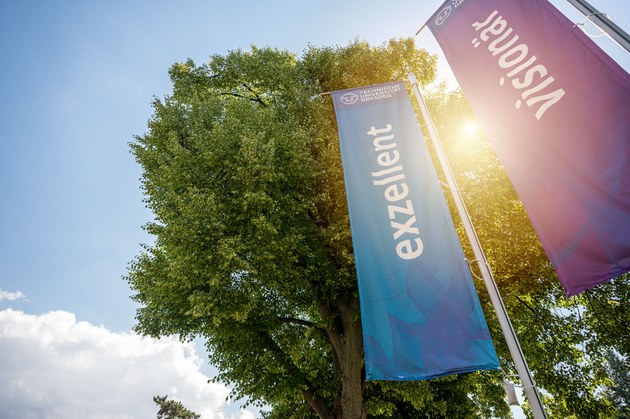Germany (Technische Universität Dresden) 10 Years of Excellent: Tu Dresden On Its Way To Becoming a World Leader

November 2012 marks a milestone in the history of TU Dresden: Ten years ago, funding began as one of the eleven Universities of Excellence in Germany. The excellence status has triggered a high dynamic of change at TUD: The university has become more interdisciplinary and international, attracting outstanding scientists from all over the world. In this way, TU Dresden can consolidate its position in the top group of German universities and approach world level. “Excellence is not only the driving force behind outstanding research at the frontiers of knowledge – it is an overall engine for innovation,” says Rector Prof. Ursula Staudinger. “It affects the entire university and beyond in many ways.”
Attracting the world’s best minds
TUD has long been one of the most efficient universities in Germany and globally in some disciplines such as life sciences and quantum materials. Otger Campàs, Professor of Tissue Dynamics, moved from the University of California to Dresden in 2021 because TUD is “one of the world’s most successful interdisciplinary institutions in the field of the physics of life, bringing together biology, physics and engineering”. Top international researchers were also recruited for digital cultures and the future of mobility in order to expand and sharpen the scientific profile. In addition, the university has become one of the largest German centers for interdisciplinary digital sciences and artificial intelligence and has played a key role in the development of the National Data Infrastructure (NFDI).
Advancing excellent research
TUD’s research strength is primarily reflected in the three Clusters of Excellence acquired in the second funding phase (2019 to 2026). At CeTI (Centre for Tactile Internet with Human-in-the-Loop), scientists from computer science, engineering, medicine and psychology are researching the democratisation of skills that, for example, enable each person to train a robot. The Cluster of Excellence ct.qmat (Complexity and Topology in Quantum Matter; a joint cluster with the Julius-Maximilians-Universität Würzburg) has succeeded in developing a laser network only the size of a grain of sand, which acts like a single laser. This can be used, for example, to increase the power of certain microlasers that are already firmly anchored in mobile phones, fiber optic networks and other everyday technologies. In the future, the latest research results from the clusters will also be integrated into teaching. The Cluster of Excellence PoL (Physics of Life), which investigates the self-organization of cells using physical laws, has launched a master’s program in biophysics and molecular biology. The clusters cfaed (Center for Advancing Electronics Dresden) and CRTD (Center for Regenerative Therapies Dresden) from the first funding period from 2012 to 2019 will also continue to operate at the level of excellence.
DRESDEN-concept: an important element of the success story
Close cooperation with non-university research institutions within the framework of the DRESDEN-concept Science and Innovation Campus plays an important role. Twelve years after its foundation, a unique scientific alliance has emerged from TUD and over 30 research institutions, including 3 Max Planck, 9 Fraunhofer, 3 Helmholtz and 4 Leibniz Institutes as well as research-based cultural partners such as the Dresden State Art Collections. “We are very proud of the DRESDEN-concept Science and Innovation Campus, which has been replicated nationwide, and want to further intensify cooperation, for example in the field of talent management and technology platforms,” says Rector Prof. Staudinger. “One of the strengths of Dresden as a location lies in bundling the strengths of non-university institutions and the university.”
Strengthening technology transfer
TUD is now one of the universities with the highest number of third-party funding in Germany. In 2021, it raised 305 million euros. In the Funding Atlas of the German Research Foundation, it has continuously improved over the last ten years and now occupies fifth place. The DFG praises the rise as a “true success story”. TUD is also successful in attracting research funding from the European Research Council (ERC). This year alone, six ERC grants were awarded.
In the excellence phase, the transfer of research results to industry was also significantly expanded. With 85 priority patent applications and 120 invention disclosures per year, it is now one of the most patent-active universities in Germany. The start-up service dresden|exists generates more than 2,000 projects with companies every year and accompanies around 20 spin-offs. Companies worth millions such as Novaled and the robotics start-up Wandelbots have emerged from TUD.
As a social actor, TUD also wants to make its contribution to shaping structural change in Lusatia. TUD is contributing its outstanding expertise in the fields of data analytics, artificial intelligence, high-performance computing and green electronics to the German Centre for Astrophysics (DZA), which was recently selected for funding by the federal and state governments, and at the same time assumes project management for the first three years.
“Our vision is to further develop TU Dresden as a globally oriented and regionally anchored top university for the 21st century. This also includes consolidating its status as a University of Excellence and establishing further Clusters of Excellence,” says Rector Prof. Staudinger. “We can build excellently on what has been achieved at TUD over the last ten years.”
On the occasion of the anniversary, the film “Bright Minds. Excellent Research”, which gives an insight into how passionate researchers at TUD work on solutions to major global challenges.
